INTRODUCTION TO QUANTUM COMPUTATION
Sean Bae
Quantum
Mechanics &
Computation
Part 1
- Motivation
- Fun video
- History
- Literature
- Applications
Part 2
- Formalism
- Insights
- Algorithms
- State-of-the-art
1 + 1 = ?
i\hbar\frac{\partial|\psi (t)\rangle}{\partial t} = [-\frac{\hbar^2}{2m}\frac{\partial^2}{\partial x^2} + V]|\psi (t) \rangle
iℏ∂t∂∣ψ(t)⟩=[−2mℏ2∂x2∂2+V]∣ψ(t)⟩
|\psi (t)\rangle = ?
∣ψ(t)⟩=?
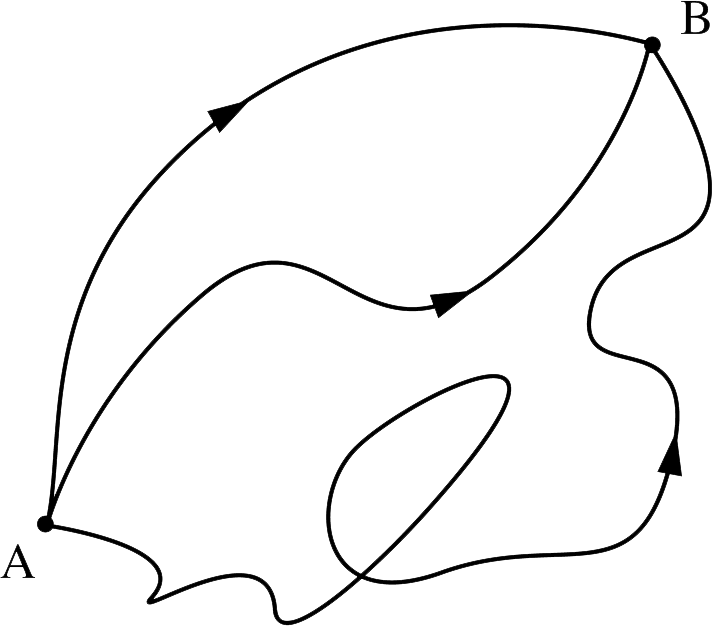
P = NP?
P=NP?
Polynomial Time
"Easy problems"
T(n) \in \mathcal{O}(poly(n))
T(n)∈O(poly(n))
10^{10} + 10^{10} = 2 \times 10^{10}
1010+1010=2×1010
10^{10} \times 10^{10} = 10^{20}
1010×1010=1020
15 = 3 \times 5
15=3×5
1539218309217839021739021 = ?
1539218309217839021739021=?
3\times 17\times 30180751161134098465471
3×17×30180751161134098465471
Non-deterministic Polynomial Time
"hard problems"
T(n) \in \mathcal{O}(2^{n})
T(n)∈O(2n)
P \subseteq NP
P⊆NP
Does being able to quickly RECOGNIZE (NP) correct answers mean there's also a quick way to FIND (P) them?
Moore's Law
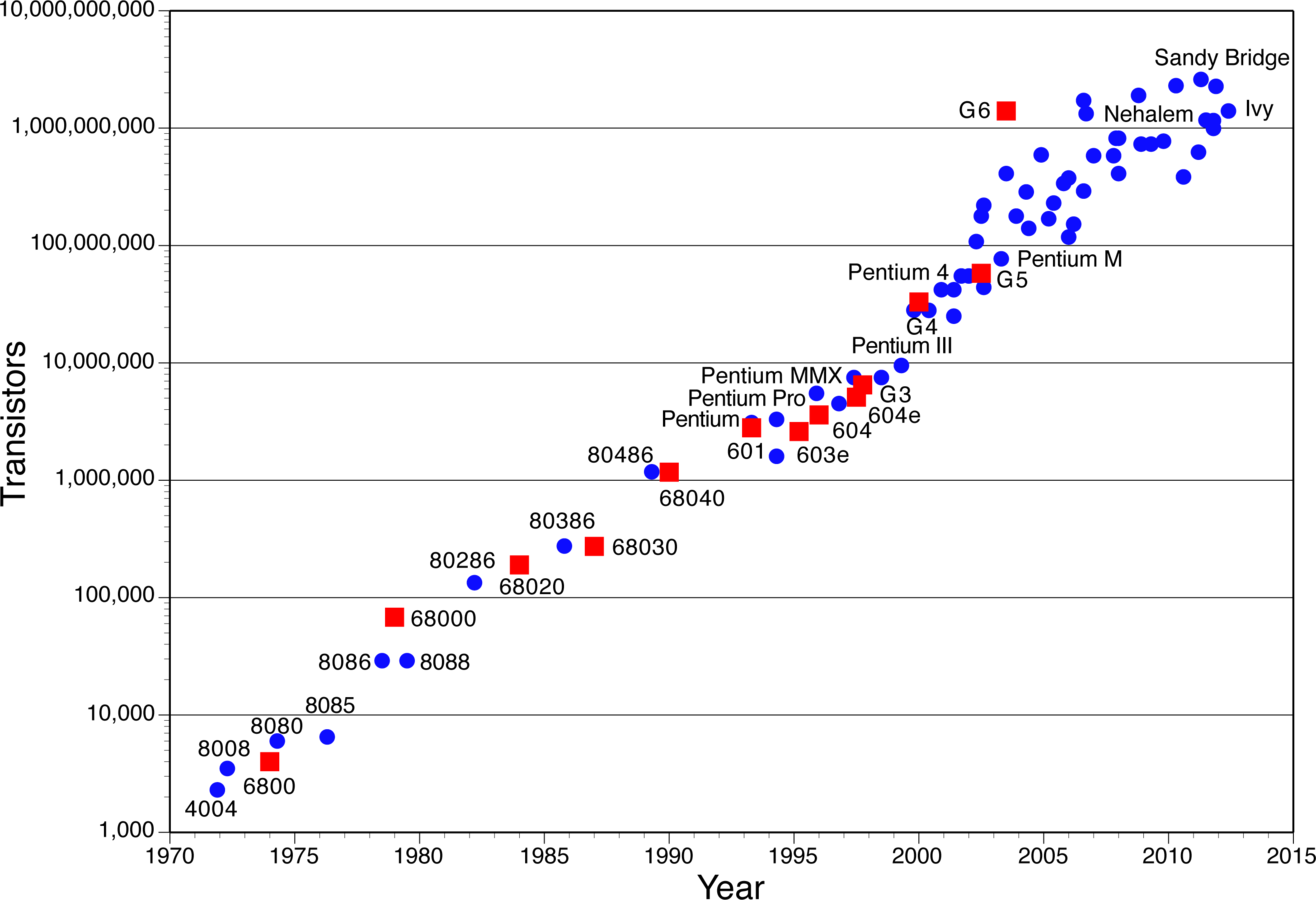

Extended Church-Turing Thesis
Any "reasonable" model of computation can be simulated on a (probabilistic) Turing Machine with at most polynomial simulation overhead
Axioms of Quantum Mechanics
- Superposition
- Measurement
- Unitary Evolution
|cat\rangle = \frac{1}{\sqrt{2}}(|dead\rangle + |alive\rangle)
∣cat⟩=√21(∣dead⟩+∣alive⟩)
- Trap a cat in a box
- A radioactive material in the box will decay with 50% probability and kill the cat in 1 hour
- Wait for 1 hour
- Is the cat is both dead and alive??
Schrödinger's Cat
Bits
0
0
1
1
Qubits = Quantum Bits
|0\rangle
∣0⟩
|1\rangle
∣1⟩

Spin Qubit
Quantum Parallelism
Quantum Entanglement


100,000 light years
Milky Way

COLLEGE PARK, MD
Milky Way

ME
YOU



ME
YOU

ME
YOU



ME
YOU
|\downarrow\rangle
∣↓⟩
|\uparrow\rangle
∣↑⟩

ME
YOU
|\downarrow\rangle
∣↓⟩
|\uparrow\rangle
∣↑⟩

ME
YOU
Information travelled faster than the speed of light?

"Spukhafte Fernwirkung!"
("Spooky action at a distance")
Albert Einstein

"God does not play dice with the universe"
Albert Einstein
John Bell
1964
"Don't tell God what to do with his dice"
Niels Bohr

Practical use of entanglement?

ME
YOU
|\psi\rangle
∣ψ⟩
\frac{1}{\sqrt{2}}|\downarrow\uparrow\rangle +\frac{1}{\sqrt{2}}|\uparrow\downarrow\rangle
√21∣↓↑⟩+√21∣↑↓⟩

ME
YOU
|\psi\rangle
∣ψ⟩
Average Human
\sim 10^{27}
∼1027
Qubits
PARTICLE CHAMBER
Champaign
Paris
SCANNER
PARTICLE CHAMBER
SCANNER
PARTICLE CHAMBER
PARTICLE CHAMBER
SCANNER
SCANNER
Champaign
Paris
SCANNER
PARTICLE CHAMBER
PARTICLE CHAMBER
SCANNER
Champaign
Paris
SCANNER
PARTICLE CHAMBER
PARTICLE CHAMBER
SCANNER
Champaign
Paris
SCANNER
PARTICLE CHAMBER
PARTICLE CHAMBER
SCANNER
Champaign
Paris
SCANNER
PARTICLE CHAMBER
PARTICLE CHAMBER
SCANNER
Champaign
Paris
We are ready to solve some interesting problems.
Computational Complexity Zoo
EXP
PSPACE
NP
NP-Complete
P
Computational Complexity Zoo
EXP
PSPACE
NP
NP-Complete
P
BQP
Bounded Error
Quantum
Polynomial Time
"solves with probability > 2/3"

Peter Shor
1994
Bell Labs
Non-trivial Square Root of 1 modulo N
x^2 \equiv 1\text{ }(\text{mod}\ N) \text{ and }\ x \neq \pm 1
x2≡1 (mod N) and x≠±1
Non-trivial Square Root of 1 modulo N
x^2-1 \equiv 0\text{ }(\text{mod}\ N)
x2−1≡0 (mod N)
N|(x + 1)(x - 1)
N∣(x+1)(x−1)
\text{gcd}(N, x + 1) \text{ and gcd}(N, x -1) \text{ are factors of }N
gcd(N,x+1) and gcd(N,x−1) are factors of N
Factoring 15
4^2=16\equiv 1 \text{ }(\text{mod } 15) \text{ and } 4 \neq \pm 1\text{ }(\text{mod } 15)
42=16≡1 (mod 15) and 4≠±1 (mod 15)
\text{gcd}(15, 5) = 5 \text{ and gcd}(15, 3) = 3
gcd(15,5)=5 and gcd(15,3)=3
15 = 3 \times 5
15=3×5
RSA Cryptography
Fun Facts
- Largest number factored is 56,153 [2014]
- Factoring 2048 bit integer (RSA)
- Classical
- 10 years
- $10^6 trillion
- 10^6 terawatts
- Quantum
- 16 hours
- $100 billion
- 10 megawatts
- Classical
Computational Complexity Zoo
EXP
PSPACE
NP
NP-Complete
P
BQP
NP-Complete Problems
- Protein Folding
- Traveling Salesman Problem (TSP)
- Boolean Satisfiability Problem
NP-Complete Problems
- Protein Folding
- Traveling Salesman Problem (TSP)
- Boolean Satisfiability Problem
- Battleship
- Tetris
- Super Mario Bros
- Candy Crush
- Sudoku
5 Minute Break

Formalism
|0\rangle = \begin{pmatrix}
1 \\ 0
\end{pmatrix}
∣0⟩=(10)
|1\rangle = \begin{pmatrix}
0 \\ 1
\end{pmatrix}
∣1⟩=(01)
|\psi\rangle = \alpha|0\rangle + \beta|1\rangle = \alpha\begin{pmatrix}1 \\ 0\end{pmatrix} + \beta\begin{pmatrix}0 \\ 1\end{pmatrix} = \begin{pmatrix}\alpha \\ \beta\end{pmatrix}
∣ψ⟩=α∣0⟩+β∣1⟩=α(10)+β(01)=(αβ)
|\psi\rangle = \alpha|0\rangle + \beta|1\rangle
∣ψ⟩=α∣0⟩+β∣1⟩
\langle\psi| = |\psi\rangle^\dagger = \alpha^*\langle0|+ \beta^*\langle1|
⟨ψ∣=∣ψ⟩†=α∗⟨0∣+β∗⟨1∣
\langle0| = (1, 0)
⟨0∣=(1,0)
\langle1| = (0, 1)
⟨1∣=(0,1)
\langle0|1\rangle = (1, 0)\begin{pmatrix}0 \\ 1\end{pmatrix} = 0
⟨0∣1⟩=(1,0)(01)=0
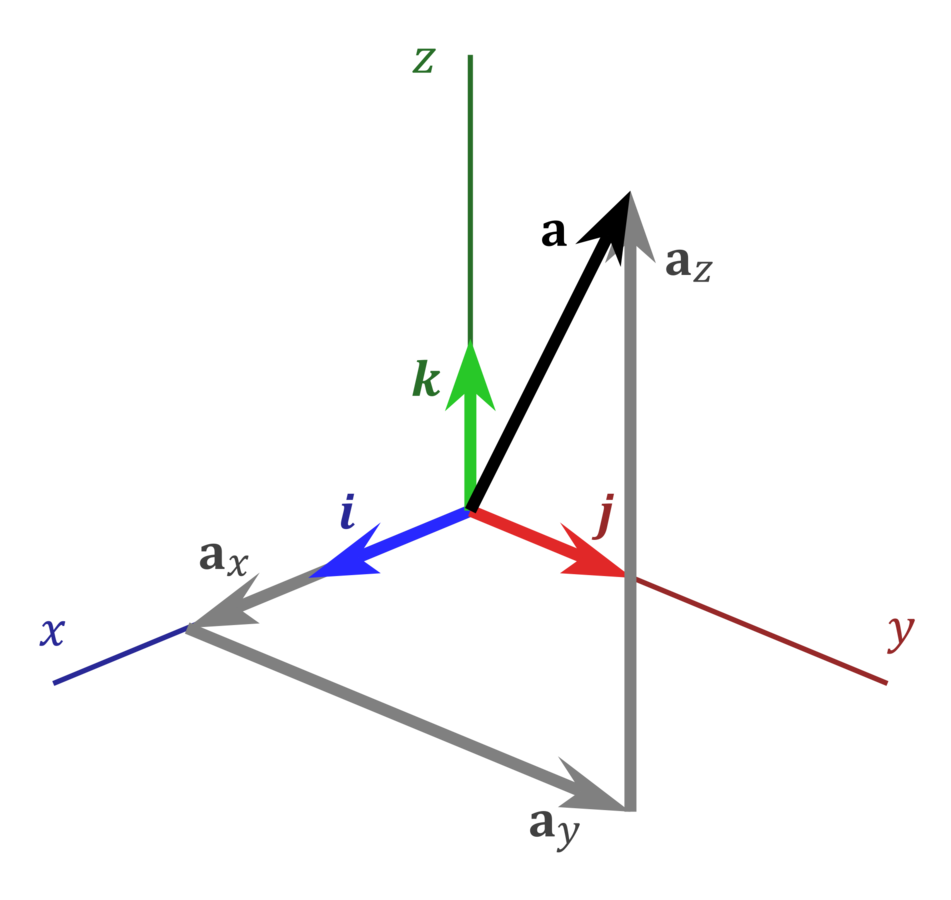
|\psi_2\rangle = \alpha_{00}|00\rangle + \alpha_{01}|01\rangle + \alpha_{10}|10\rangle + \alpha_{11}|11\rangle
∣ψ2⟩=α00∣00⟩+α01∣01⟩+α10∣10⟩+α11∣11⟩
|\psi_1\rangle = \alpha_{0}|0\rangle + \alpha_{1}|1\rangle
∣ψ1⟩=α0∣0⟩+α1∣1⟩
\text{N-qubit system is a }2^N\text{ dimensional complex vector space}
N-qubit system is a 2N dimensional complex vector space
...
...
\text{What exactly are these }\alpha\text{'s and }\beta\text{'s?}
What exactly are these α's and β's?
|\psi\rangle = \alpha|0\rangle + \beta|1\rangle
∣ψ⟩=α∣0⟩+β∣1⟩
i\hbar\frac{\partial\Psi}{\partial t} = -\frac{\hbar^2}{2m}\frac{\partial^2 \Psi}{\partial x^2} + V\Psi
iℏ∂t∂Ψ=−2mℏ2∂x2∂2Ψ+VΨ
Schrödinger Equation in 1D
i\hbar\frac{\partial\Psi}{\partial t} = -\frac{\hbar^2}{2m}\frac{\partial^2 \Psi}{\partial x^2} + V\Psi
iℏ∂t∂Ψ=−2mℏ2∂x2∂2Ψ+VΨ
Assumption:
\Psi \text{ is real}
Ψ is real
Complex
i\hbar\frac{\partial\Psi}{\partial t} = -\frac{\hbar^2}{2m}\frac{\partial^2 \Psi}{\partial x^2} + V\Psi
iℏ∂t∂Ψ=−2mℏ2∂x2∂2Ψ+VΨ
Assumption:
\Psi \text{ is real}
Ψ is real
Complex
Real
i\hbar\frac{\partial\Psi}{\partial t} = -\frac{\hbar^2}{2m}\frac{\partial^2 \Psi}{\partial x^2} + V\Psi
iℏ∂t∂Ψ=−2mℏ2∂x2∂2Ψ+VΨ
Assumption:
\Psi \text{ is real}
Ψ is real
Complex
Real
Contradiction!
Inner Product (Dot Product)
\text{For basis vectors }|i\rangle \text{ and } |j\rangle \text{, } \langle i|j\rangle = \delta_{ij}
For basis vectors ∣i⟩ and ∣j⟩, ⟨i∣j⟩=δij
\text{In functional space, }\langle\phi |\psi\rangle = \int_{-\infty}^{+\infty} \phi^* \psi dx
In functional space, ⟨ϕ∣ψ⟩=∫−∞+∞ϕ∗ψdx
\delta_{ij} = \left\{
\begin{array}{ll}
0 & i\neq j \\
1 & i = j
\end{array}
\right.
δij={01i≠ji=j
Geometric Interpretation of Inner Product

Born Interpretation of QM
\text{Probability of measuring } |\phi_n\rangle \text{ from } |\psi\rangle \text{ is }|\langle \phi_n|\psi\rangle|^2
Probability of measuring ∣ϕn⟩ from ∣ψ⟩ is ∣⟨ϕn∣ψ⟩∣2
\text{and if you observe } |\phi_n\rangle \text{ then the new state is } |\phi_n\rangle
and if you observe ∣ϕn⟩ then the new state is ∣ϕn⟩
Observables
U = \sum_n \lambda_n|\phi_n\rangle \langle \phi_n|
U=∑nλn∣ϕn⟩⟨ϕn∣
U|\phi_m \rangle = \lambda_m |\phi_m \rangle
U∣ϕm⟩=λm∣ϕm⟩
\hat{H}|\psi_n \rangle = E_n |\psi_n \rangle
H^∣ψn⟩=En∣ψn⟩
Measurement Example
\text{Let }|\psi\rangle = \frac{1}{\sqrt{2}}(|0\rangle + |1\rangle)
Let ∣ψ⟩=√21(∣0⟩+∣1⟩)
\text{Probability of measuring } |0\rangle \text{ from } |\psi\rangle \text{ is }|\langle 0|\psi\rangle|^2
Probability of measuring ∣0⟩ from ∣ψ⟩ is ∣⟨0∣ψ⟩∣2
\langle 0|\psi\rangle = \langle 0 | (\frac{1}{\sqrt{2}}(|0\rangle + |1\rangle )) = \frac{1}{\sqrt{2}} \langle 0|0\rangle + \frac{1}{\sqrt{2}} \langle 0|1\rangle
⟨0∣ψ⟩=⟨0∣(√21(∣0⟩+∣1⟩))=√21⟨0∣0⟩+√21⟨0∣1⟩
= \frac{1}{\sqrt{2}} \delta_{00} + \frac{1}{\sqrt{2}} \delta_{01} = \frac{1}{\sqrt{2}}
=√21δ00+√21δ01=√21
Normalization Rule
\langle\psi |\psi\rangle = 1
⟨ψ∣ψ⟩=1
\forall |\psi\rangle = \alpha |0\rangle + \beta |1\rangle
∀∣ψ⟩=α∣0⟩+β∣1⟩
|\alpha|^2 + |\beta|^2 = 1
∣α∣2+∣β∣2=1
Normalization Rule
\langle\psi |\psi\rangle = 1
⟨ψ∣ψ⟩=1
\forall |\psi\rangle = \alpha |0\rangle + \beta |1\rangle
∀∣ψ⟩=α∣0⟩+β∣1⟩
|\alpha|^2 + |\beta|^2 = 1
∣α∣2+∣β∣2=1
Qubit is a unit vector!
Dimension of Wave Function
\text{Recall in functional space, }\langle\psi |\psi\rangle = \int_{-\infty}^{+\infty} \psi^* \psi dx = 1
Recall in functional space, ⟨ψ∣ψ⟩=∫−∞+∞ψ∗ψdx=1
\text{Dimension of }[\psi] = \frac{1}{\sqrt{m}}
Dimension of [ψ]=√m1
How can we mathematically manipulate qubits to do interesting computation?
Unitary Evolution
\text{A matrix }U\text{ is unitary if } UU^\dagger = U^\dagger U = I
A matrix U is unitary if UU†=U†U=I
\text{Quantum states go through unitary evolution.}
Quantum states go through unitary evolution.
Logic Gates
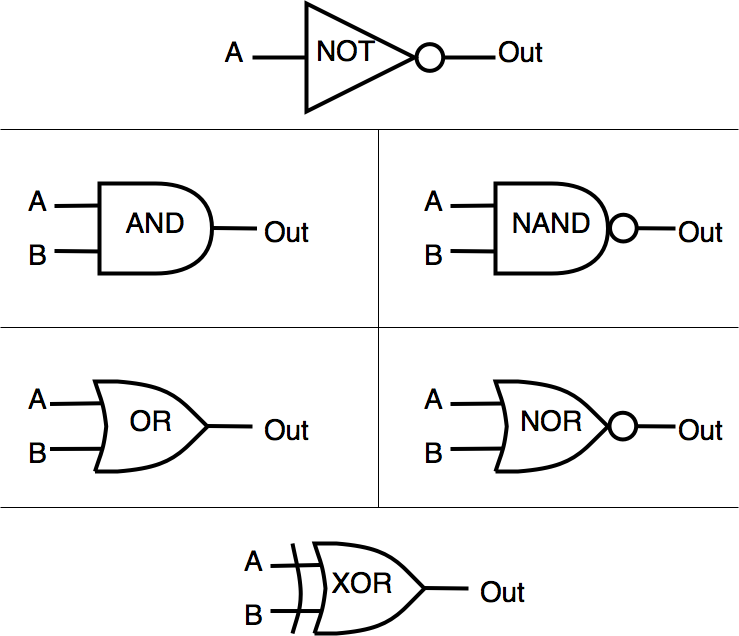
Quantum Gates
X = \begin{pmatrix}
0 & 1\\
1 & 0
\end{pmatrix}
X=(0110)
H = \frac{1}{\sqrt{2}}\begin{pmatrix}
1 & 1\\
1 & -1
\end{pmatrix}
H=√21(111−1)
Z = \begin{pmatrix}
1 & 0\\
0 & -1
\end{pmatrix}
Z=(100−1)
CNOT = \begin{pmatrix}
1 & 0 & 0 & 0\\
0 & 1 & 0 & 0\\
0 & 0 & 0 & 1\\
0 & 0 & 1 & 0
\end{pmatrix}
CNOT=⎝⎜⎜⎛1000010000010010⎠⎟⎟⎞
Quantum Teleportation Protocol
How do you find a needle
in a haystack?
How do you find a needle
in a haystack?

Grover's Algorithm
Unstructured Search
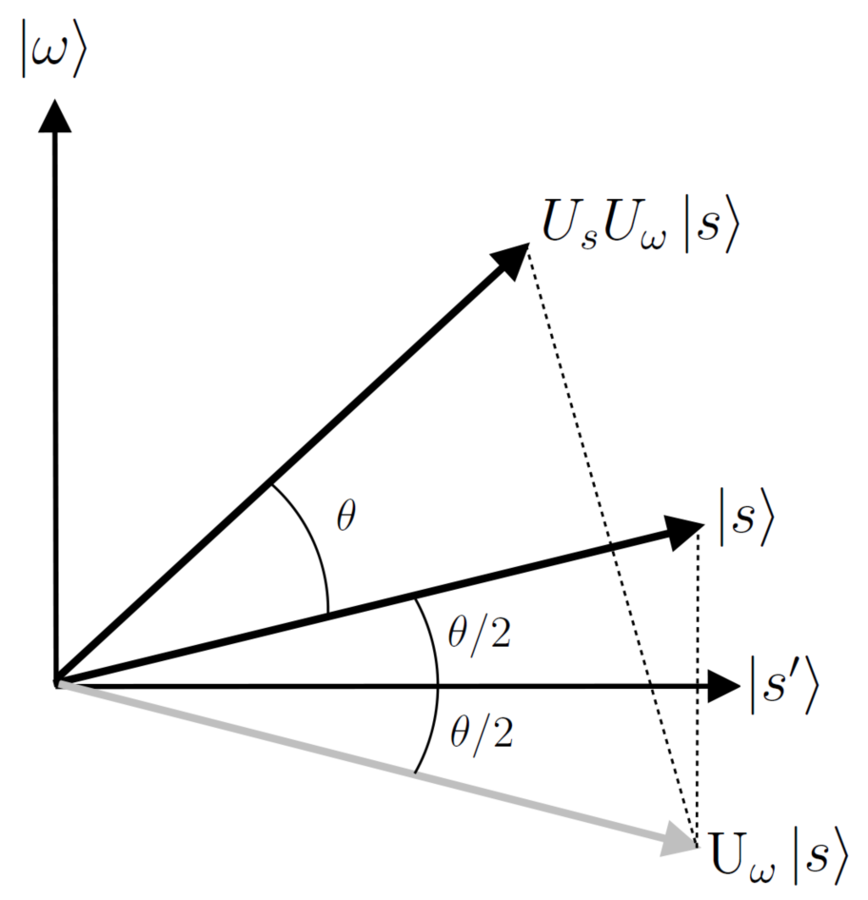
T(N) = O(\sqrt{N})
T(N)=O(√N)
Our discussion of qubit has been abstract
Our discussion of qubit has been abstract
How can we realize a physical qubit?
p
e-
|0\rangle
∣0⟩
Hydrogen
p
e-
|1\rangle
∣1⟩
Hydrogen
p
e-
e-
|\psi\rangle
∣ψ⟩
Hydrogen
Particle in a Box
m
m
0
0
l
l
|\psi (t)\rangle = \text{ }?
∣ψ(t)⟩= ?
Schrödinger Equation
i\hbar\frac{d|\psi\rangle}{dt} = \hat{H} |\psi\rangle
iℏdtd∣ψ⟩=H^∣ψ⟩
|\psi (t)\rangle = e^{-i\frac{\hat{H}}{\hbar}t} |\psi (t=0)\rangle
∣ψ(t)⟩=e−iℏH^t∣ψ(t=0)⟩
General Solution
|\psi (t)\rangle = e^{i\frac{\hat{H}}{\hbar}t} |\psi (t=0)\rangle
∣ψ(t)⟩=eiℏH^t∣ψ(t=0)⟩
|\psi (t=0)\rangle = \sum_n c_n|\psi_n \rangle
∣ψ(t=0)⟩=∑ncn∣ψn⟩
|\psi (t)\rangle = \sum_n c_n e^{-iE_n t/\hbar}|\psi_n \rangle
∣ψ(t)⟩=∑ncne−iEnt/ℏ∣ψn⟩
Particle in a Box
|\psi_n\rangle = \sqrt{\frac{2}{l}}\sin{(\frac{n\pi}{l}x)}
∣ψn⟩=√l2sin(lnπx)
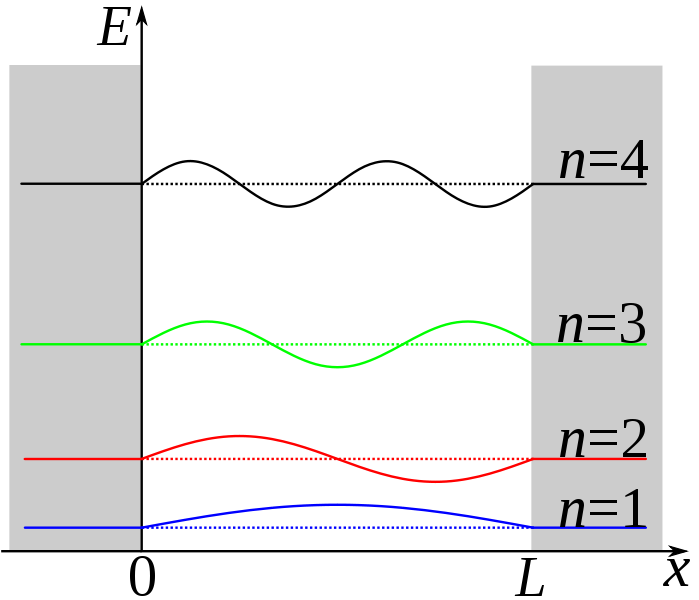
E_n = \frac{n^2\pi^2 \hbar^2}{2ml^2}
En=2ml2n2π2ℏ2
Particle in a Box
|0\rangle = \sqrt{\frac{2}{l}}\sin{(\frac{\pi}{l}x)}
∣0⟩=√l2sin(lπx)
E_1 = \frac{\pi^2 \hbar^2}{2ml^2}
E1=2ml2π2ℏ2
|1\rangle = \sqrt{\frac{2}{l}}\sin{(\frac{2\pi}{l}x)}
∣1⟩=√l2sin(l2πx)
E_2 = \frac{2\pi^2 \hbar^2}{ml^2}
E2=ml22π2ℏ2
Particle in a Box
|\psi\rangle = \alpha |0\rangle + \beta |1\rangle
∣ψ⟩=α∣0⟩+β∣1⟩
|\psi (t)\rangle = \alpha |0\rangle e^{-\frac{iE_1 t}{\hbar}} + \beta |1\rangle e^{-\frac{iE_2 t}{\hbar}}
∣ψ(t)⟩=α∣0⟩e−ℏiE1t+β∣1⟩e−ℏiE2t
|\psi (t)\rangle = e^{-\frac{iE_1 t}{\hbar}} (\alpha |0\rangle + \beta |1\rangle e^{-\frac{i(\Delta E)t}{\hbar}})
∣ψ(t)⟩=e−ℏiE1t(α∣0⟩+β∣1⟩e−ℏi(ΔE)t)
\Delta E \approx 10 \text{ eV}
ΔE≈10 eV
\nu = \frac{\Delta E}{h} = 2.5 \times 10^{15} \text{ Hz}
ν=hΔE=2.5×1015 Hz
\therefore \text{Atomic qubits are controlled optically via interactions with light pulses}
∴Atomic qubits are controlled optically via interactions with light pulses
Solving NP-Complete Problems
Quantum Adiabatic Optimization
\hat{H}(s) = (1-s)\hat{H}_B + s\hat{H}_P
H^(s)=(1−s)H^B+sH^P
\Delta (\hat{H}) = |E_2 - E_1|
Δ(H^)=∣E2−E1∣
T \propto O(\frac{1}{{\Delta (\hat{H}(s))}^3})
T∝O(Δ(H^(s))31)
State-of-the-art
Trapped Atomic Ion
- very long (>>1s) memory
- <20 coherent qubits
- engineering needed
- connection reconfigurable
Superconducting Loop
- short (10^-6s) memory
- <10 coherent qubits
- printable circuits and VLSI
- not reconfigurable
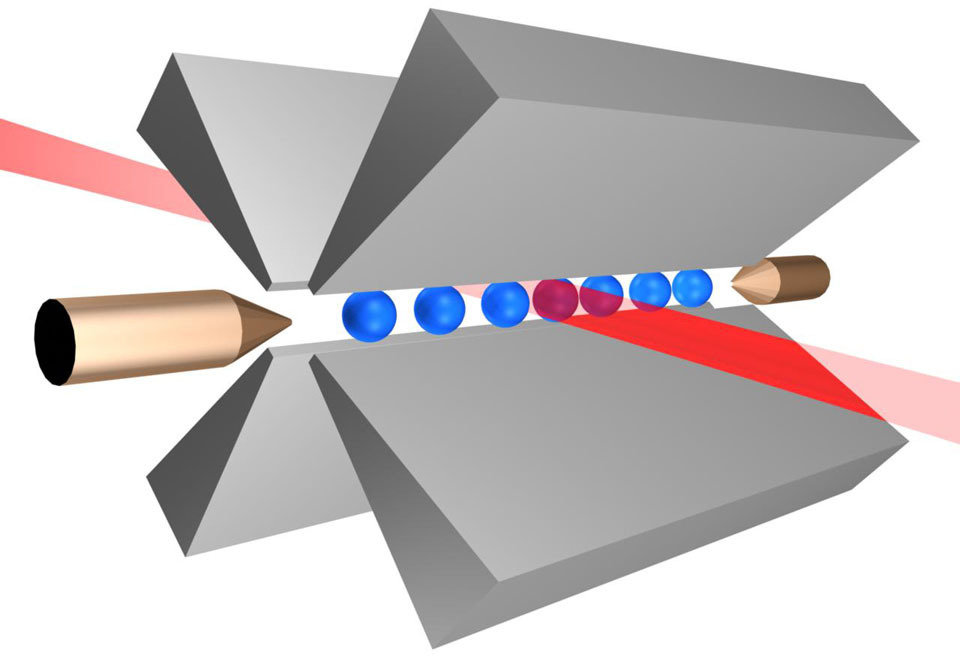
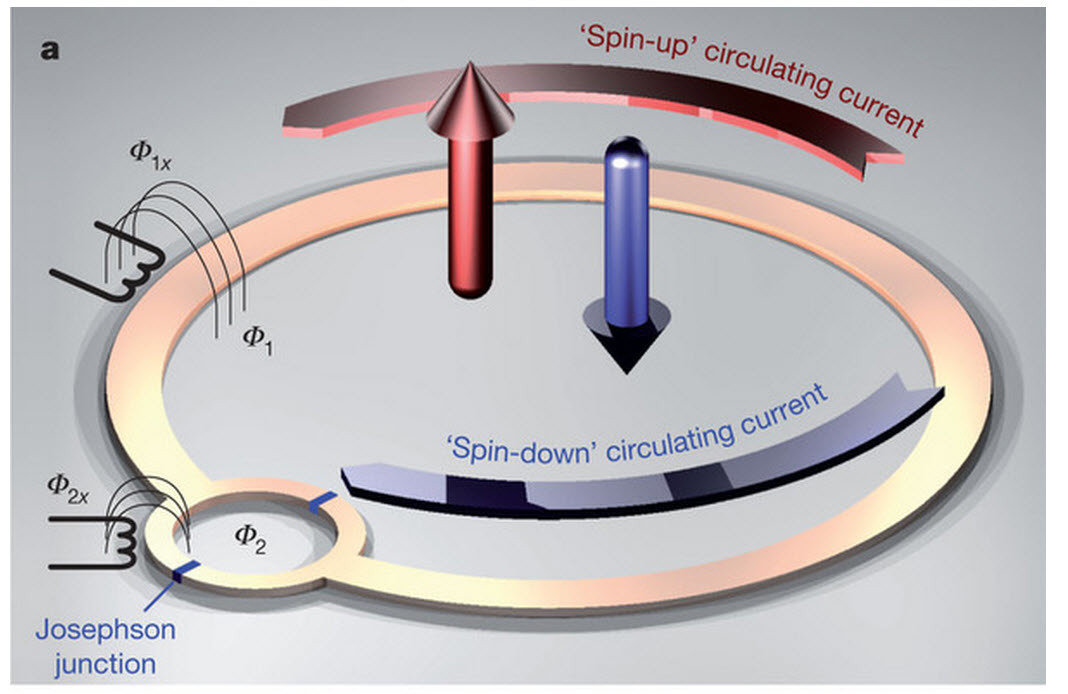
\vec{\nabla} \cdot \vec{E} = 0
∇⃗⋅E⃗=0
Maxwell's Equations
\text{Cannot create a stable equilibrium with a static potential.}
Cannot create a stable equilibrium with a static potential.
Q & A
Copy of Quantum Computation
By seanbae
Copy of Quantum Computation
- 719



